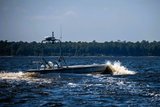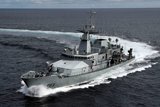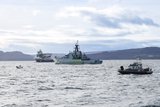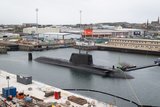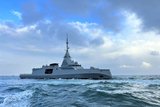TKMS introduces new submarine fuel cell
Thyssenkrupp Marine Systems (TKMS) has unveiled its 4th Generation Fuel Cell (FC4G) for utilisation in submarines, following completion of a comprehensive test programme for the propulsion system.
FC4G has undergone in excess of 70,000 operating hours of testing, demonstrating the hydrogen-fuelled system’s performance.
‘Our customers have been using our fuel cell systems for more than 15 years now,’ Rolf Wirtz, CEO of Thyssenkrupp Marine Systems, said.
‘With this fourth generation we are making something great even greater. This is the next big step with huge improvements in availability, redundancy, and stealth.’
The fuel cell is designed to be a high-availability modular system composed of redundant components to retain a maximum performance at all times, according to the company.
The system relies on the proven and safe hydrogen storage method of using metal hydride cylinders as was the case with previous generations, which do not contain any active components, so are less inclined to fail, holding the hydrogen molecules in place in the crystal lattice of the hydride.
Furthermore, since hydrogen is fed to the system in its purest form, no chemical conversion is required, so the efficiency of the overall system remains high.
The only by-product besides electrical energy is pure water, which is stored on board for weight compensation.
H2 is a gas that is available in most countries that the company would be looking to cell the fuel cell, and can be produced by utilising green energy sources by splitting water into H2 and O2.
With no by-products put overboard, the thermal and acoustic signatures produced are kept to a minimum, while TKMS says that the overall system efficiency is twice as good as a combustion engine.
‘These are the reasons why 38 systems were contracted so far with seven customer navies, another ten systems presently being under negotiation,’ Philipp Schön, head of product sales for submarines, added.
More from Naval Warfare
-
![How the UK Royal Navy is powering up its hybrid fleet to combat new threats]()
How the UK Royal Navy is powering up its hybrid fleet to combat new threats
Since it announced its move towards a new “hybrid navy” earlier this year, the force has announced a number of new uncrewed technologies in the works.
-
![US and UK to begin Trident II D5 Increment 8 in October 2026]()
US and UK to begin Trident II D5 Increment 8 in October 2026
Trident II D5 Increment 8 will involve improvements to the shipboard navigation subsystem for the US Ohio and Columbia and the UK Dreadnought and Vanguard submarine classes.
-
![What capabilities has the US deployed in the Caribbean and South America to engage “drug boats”?]()
What capabilities has the US deployed in the Caribbean and South America to engage “drug boats”?
The US arsenal includes amphibious assault and littoral combat ships, cutters, destroyers, landing platform docks, a nuclear-powered fast attack submarine, drones, ISR aircraft, helicopters and fighters.
-
![HMS Agamemnon: details of the dive and what the Astute-class signifies for the UK Royal Navy]()
HMS Agamemnon: details of the dive and what the Astute-class signifies for the UK Royal Navy
As HMS Agamemnon moves closer towards joining the UK’s in-service submarine fleet, how does the sixth Astute-class fit into the Royal Navy’s defence strategy?
-
![French Navy frigates to align with Hellenic Navy after Aster missile enhancement]()
French Navy frigates to align with Hellenic Navy after Aster missile enhancement
The FDI frigates will have an enhanced warfare capability that matches the configuration of ships ordered by Greece.








